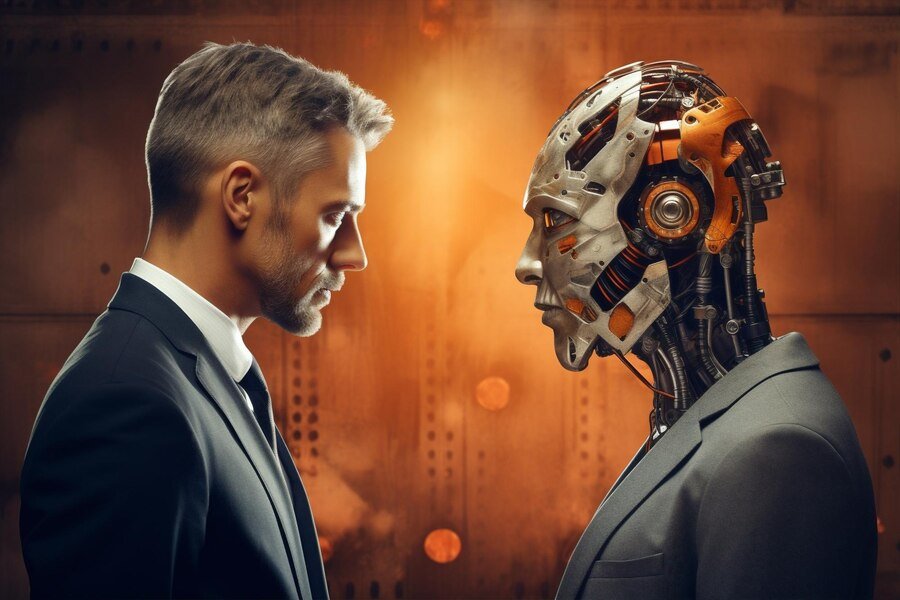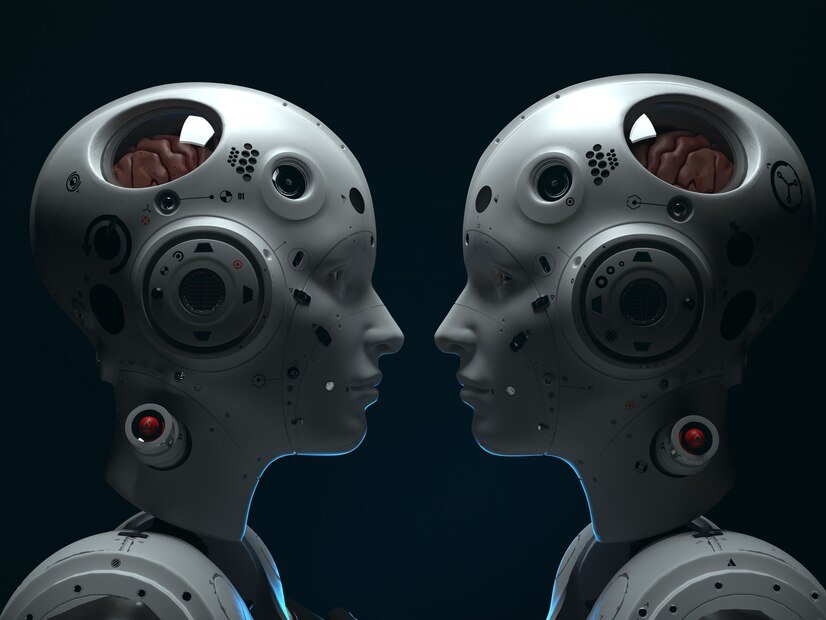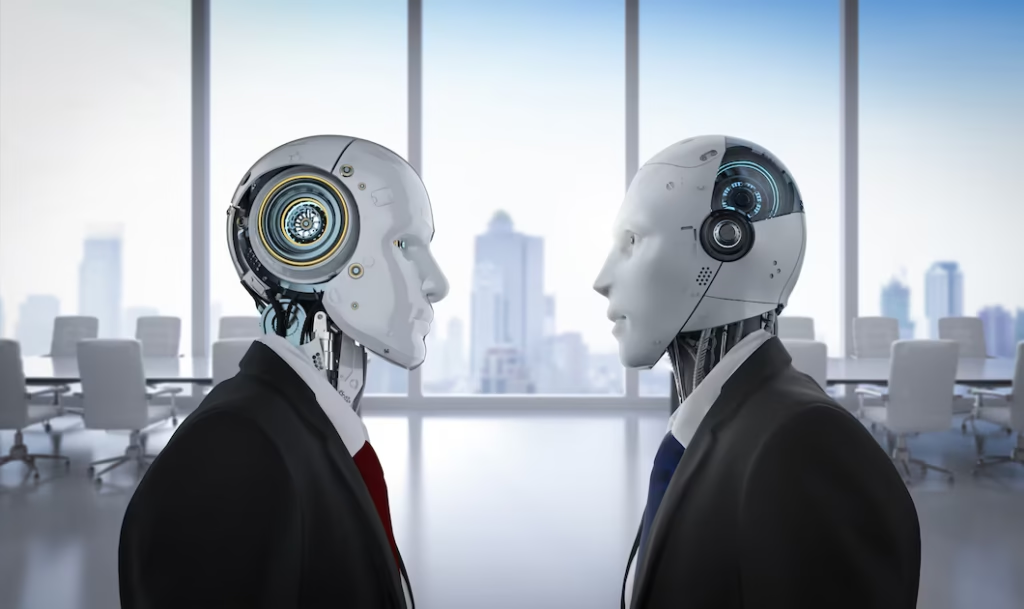Introduction
Man-made thinking (PC based knowledge) and computer based intelligence (ML) are two of the most earth shattering and extensively AI vs ML analyzed headways in the state of the art world. While they are often used proportionally, they address undeniable fields with different goals and approaches. Man-made insight suggests the greater thought of making machines fit for performing tasks that normally require understanding AI and ML human information, for instance, bearing, language understanding, and decisive reasoning. On the other hand, computer based intelligence, a subset of recreated knowledge, revolves around the limit of machines to acquire from data and work on their display without being unequivocally changed. This article examines the basic differences among recreated knowledge and computer based intelligence, their applications, and how these headways are forming what the future holds.
Defining Artificial Intelligence and Machine Learning
At its center, artificial intelligence is a part of software engineering pointed toward building machines or frameworks that AI vs ML can perform errands that normally require human knowledge. Man-made intelligence frameworks are intended to reenact human mental capabilities, like thinking, picking up, arranging, and figuring out normal language. Simulated intelligence can be sorted into understanding AI and ML two kinds: restricted simulated intelligence (or feeble simulated intelligence), which is intended to perform explicit undertakings, and general simulated intelligence (or solid computer based intelligence), which can carry out any mental role that a human can.
Machine Learning then again, is a subset of computer based intelligence that centers explicitly around the idea of helping machines to gain from information. Rather than being expressly modified to perform errands, AI models are prepared on information to perceive designs, make forecasts, and work on their precision over the long run. AI isn’t an independent innovation; rather, it is one of the numerous strategies used to accomplish man-made intelligence.
Key Differences in Approach
The main contrast among man-made intelligence and AI vs MLlies in their way to deal with taking care of issues. Computer based intelligence is worried about making frameworks that can perform clever undertakings, understanding AI and ML whether they include gaining from information. For instance, rule-based frameworks in artificial intelligence utilize pre-characterized rules to settle on choices in light of data sources, for example, a specialist framework utilized for clinical determinations. These frameworks can perform explicit assignments well yet come up short on capacity to learn and adapt.
Machine learning, interestingly, is worked around the possibility of information driven learning. Rather than depending on express guidelines or directions, AI calculations utilize huge datasets to recognize examples and make expectations. These frameworks gain from information and work on their exhibition as they are presented to more data. This capacity to gain as a matter of fact separates AI from different types of simulated intelligence.
Data Dependency
While both simulated intelligence and AI vs MLdepend on information, the manner in which they use it varies fundamentally. Man-made intelligence frameworks might require information however are frequently planned understanding AI and ML with explicit guidelines or directions, implying that they can work without gaining from information. For instance, a chess-playing computer based intelligence framework can follow pre-customized procedures to simply decide, without expecting to gain from each move it makes.In contrast, AI models are completely information driven. The viability of an AI calculation relies upon the quality and amount of information it approaches.
The more information the model is presented to, the better it can learn and refine its forecasts or activities. This weighty dependence on information is one of the principal justifications for why AI has become such an incredible asset in regions like picture acknowledgment, regular language handling, and prescient examination.
Learning Methods
AI utilizes different learning techniques, every one AI vs ML of which adds to its flexibility. Directed learning, the most well-known type, includes preparing a model on a marked dataset, where the right responses (names) are accommodated each info. The model figures out how to plan contributions to the right results and is assessed on its capacity to make forecasts on new, inconspicuous data.Unsupervised understanding AI and ML learning, then again, includes preparing a model on unlabeled information. The calculation attempts to distinguish examples or groupings in the information all alone, frequently utilized for bunching or irregularity discovery assignments. Support learning, one more technique for AI, depends on preparing a specialist to pursue choices by collaborating with a climate.
The specialist gets criticism as remunerations or punishments in light of its activities, and after some time, it figures out how to augment compensates and limit penalties.AI frameworks, especially before, have depended more on rule-based approaches or master frameworks, where human information characterizes the dynamic rationale. While man-made intelligence keeps on utilizing rule-based rationale, AI models are more adaptable and versatile, permitting frameworks to gain from their own experience as opposed to rigorously observing predefined guidelines.

Applications of AI
Man-made intelligence has a large number of uses AI vs ML across various ventures, from medical care and money to independent vehicles and diversion. In medical care, computer based intelligence frameworks understanding AI and ML are utilized for diagnostics, therapy arranging, and mechanical medical procedures. In finance, man-made intelligence is utilized for algorithmic exchanging, misrepresentation recognition, and customized financial administrations. Independent vehicles use man-made intelligence for route, direction, and ongoing handling of sensor information. Artificial intelligence is additionally utilized in voice colleagues like Siri and Alexa, AI vs ML chatbots, Applications of AI and suggestion frameworks on stages like Netflix and Amazon.Machine learning, while additionally comprehensively relevant, sparkles in regions where information is bountiful and complex examples should be extricated.
AI is utilized for prescient investigation, normal language handling (NLP), PC vision, and discourse acknowledgment. In enterprises like retail, medical care, and showcasing, AI is utilized for client division, deals guaging, and customized proposals. As of late, AI has additionally been instrumental in regions like facial understanding AI and ML acknowledgment, language interpretation, and self-driving vehicles.
How AI and Machine Learning Drive Efficiency
Computer based intelligence and AI vs MLare both strong drivers of mechanization in present day businesses. Artificial intelligence frameworks are utilized to computerize dynamic cycles that would somehow or another require human intercession, for example, misrepresentation identification, credit scoring, and client assistance. Computerization fueled by artificial intelligence can assist associations with saving time and diminish human mistake while expanding proficiency and productivity.Machine learning drives robotization by empowering frameworks to further develop in understanding AI and ML light of information persistently. For instance, prescient upkeep frameworks in assembling use AI to distinguish hardware breakdowns before they happen, permitting organizations to plan fixes and limit free time. AI calculations can naturally conform to changes in information designs, making them ideal for errands like anticipating, continuous direction, and stock administration.

The Role of AI in Cognitive Functions
One of the center objectives of artificial intelligence is to imitate or mimic human mental capabilities, for example, critical thinking, learning, AI vs ML language understanding, and independent direction. Computer based intelligence frameworks expect to imitate how people think and cycle data, regardless of whether the particular cycles vary. While man-made intelligence frameworks can utilize various methods, including AI, to perform errands, they are intended to work autonomously, understanding AI and ML without depending on human contribution after introductory programming.In contrast, AI frameworks are explicitly intended to gain as a matter of fact and work on over the long haul. While they can recreate specific mental capabilities like perceiving examples or making forecasts, they don’t plan to imitate human reasoning completely.
Computational Power
Both computer based intelligence and AI vs MLdepend on computational ability to really play out their errands. On account of man-made intelligence, computational power is expected to handle the perplexing standards and understanding AI and ML calculations that drive wise navigation. This can incorporate assignments like normal language figuring out, thinking, and arranging. Previously, artificial intelligence frameworks frequently expected specific equipment and broad programming to perform even moderately basic assignments. AI, particularly profound learning, is especially computationally serious. Preparing a profound learning model frequently requires huge measures of information and computational assets, particularly while managing undertakings like picture acknowledgment or language interpretation.
Ethical Considerations
As simulated intelligence and AI vs MLinnovations keep on progressing, moral contemplations are turning out to be progressively significant. One of the essential worries in the two fields is algorithmic predisposition, where artificial intelligence and AI frameworks might deliver one-sided results in view of understanding AI and ML the information they are prepared on. For instance, one-sided information in employing calculations can prompt victimization certain segment gatherings. Both simulated intelligence and AI frameworks should be painstakingly checked and acclimated to limit inclinations and guarantee decency.
The Future of AI and Machine Learning
The eventual fate of simulated intelligence and AI vs MLisn’t around one innovation overwhelming the other, but instead about how they will cooperate to take care of complicated issues. While simulated intelligence understanding AI and ML gives the more extensive structure to wise direction, AI gives the versatile, information driven capacities that empower artificial intelligence frameworks to work on over the long haul. As the two advances keep on developing, we can hope to see more joint effort and combination in fields like medical services, finance, independent vehicles, and robotics.
Conclusion
While simulated intelligence and AI vs MLare firmly related, they address unmistakable ways to deal with tackling issues. Simulated intelligence incorporates an expansive scope of strategies intended to duplicate human insight, understanding AI and ML while AI centers explicitly around training machines to gain from information. The two advancements can possibly change businesses, from medical services to fund to transportation. By understanding their vital contrasts and reciprocal qualities, we can tackle the force of computer based intelligence and AI to make more intelligent, more productive, and more creative frameworks.

